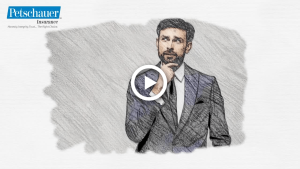Two Important Items To Look At When Buying A Fire And Liability Insurance Policy
 We’ve all seen the commercials with cartoon military officers, reptiles, and bugging devices telling us their policies will save you money. However, how do you really know if you are getting the RIGHT insurance to protect you? While price is important, should it be the only criteria when picking a policy? Would you buy a new car if the only thing you knew about it was its price? Of course not! Yet, at times, that is the only thing we understand about a policy.
We’ve all seen the commercials with cartoon military officers, reptiles, and bugging devices telling us their policies will save you money. However, how do you really know if you are getting the RIGHT insurance to protect you? While price is important, should it be the only criteria when picking a policy? Would you buy a new car if the only thing you knew about it was its price? Of course not! Yet, at times, that is the only thing we understand about a policy.
Therefore, this week, I’m going to discuss two of the more important items to look at when comparing various insurance quotes for fire and liability policies. Each will affect the premium, but once you know what they mean, you can determine if you want to pay the extra premium for that coverage or not. Also, this will help you make an apples-to-apples comparison with all the quotes you receive.
VALUATION
Policies usually determine a loss in one of two ways: Replacement Cost or Actual Cash Value. A Replacement Cost policy pays you the actual cost to replace an item; while an Actual Cash Value policy takes depreciation into consideration. For example, let’s say you insure a $30,000 Home Theater and you’re the envy of the neighborhood! Unfortunately a fire destroys it and you put in a claim. A Replacement Cost policy is going to give you $30,000 once you go out to replace the system and submit the bill showing the actual replacement cost. An Actual Cash Value policy is going to determine that this Home Theater is now over two years old and due to depreciation and newer models now available, your Home Theater is only worth about $2,000, so that is what they are going to pay you. The premium is less, but there is a big difference as to what you will be paid when presenting a claim. Is it worth it? That’s up to you.
PERILS
Policies are written on a “Basic Form”, “Broad Form”, or “Special Form”. The “Basic Form” covers 11 perils. They are fire, lightning, explosion, windstorm or hail, smoke, aircraft or vehicle damage, riot or civil commotion, vandalism, sprinkler leakage, sinkhole collapse, and volcanic action. “Broad Form” also covers these 11 perils plus breakage of glass, falling objects, weight of ice, sleet, or snow, water damage, and collapse. “Special Form” is different. This form protects you from all causes of physical damage unless otherwise specifically limited or specifically excluded in the policy. In the first two types of forms, you have to prove that the policy covers it in order to get paid a claim. With “Special Form”, the insurance carrier has to prove that their policy specifically excluded it in order to not pay the claim. Which do you prefer? You get what you pay for.
That’s why it is so important that when you receive a quote, you review the form and valuation. If they are quoting you “Special Form”, you need to see the exclusions so that you can decide if the price is right for you. And these are just two items to take into consideration. Join our agency again next week when we discuss a few more items that you want to consider before laying down your hard-earned money!
– Ray Alvarez









